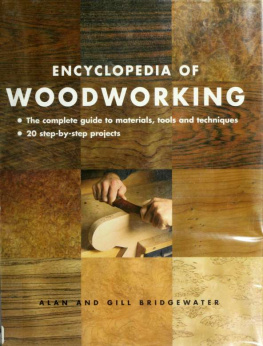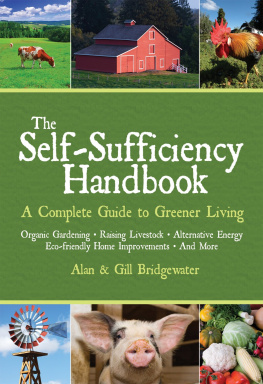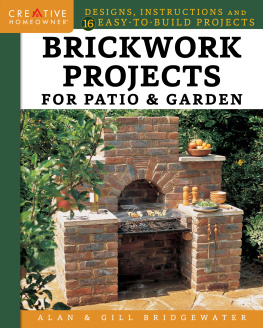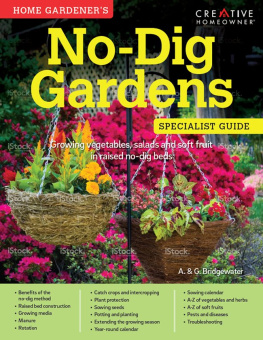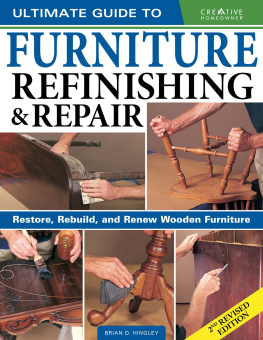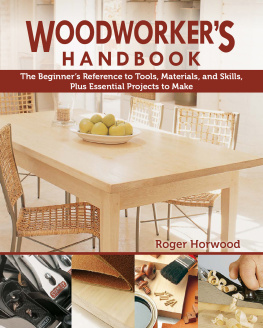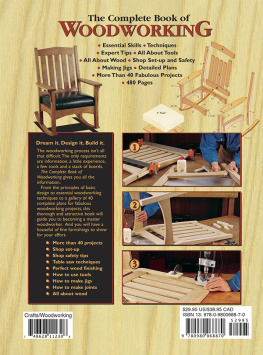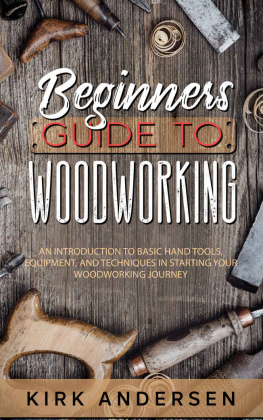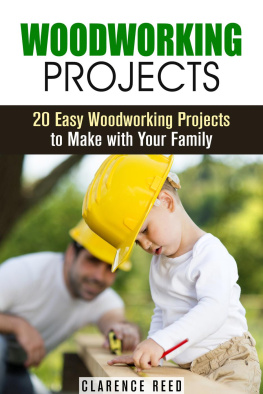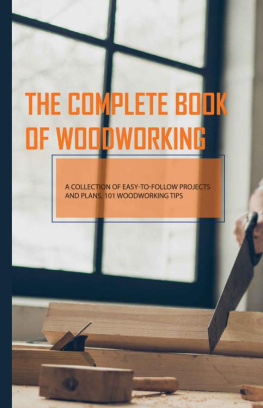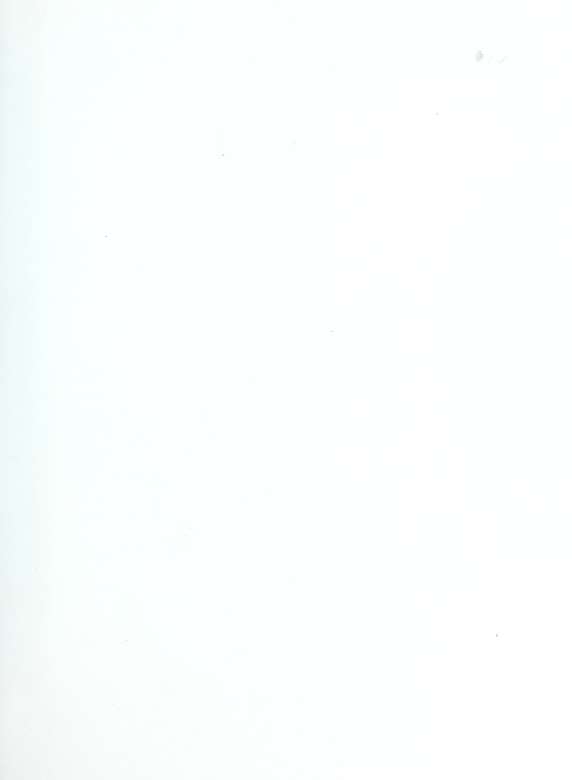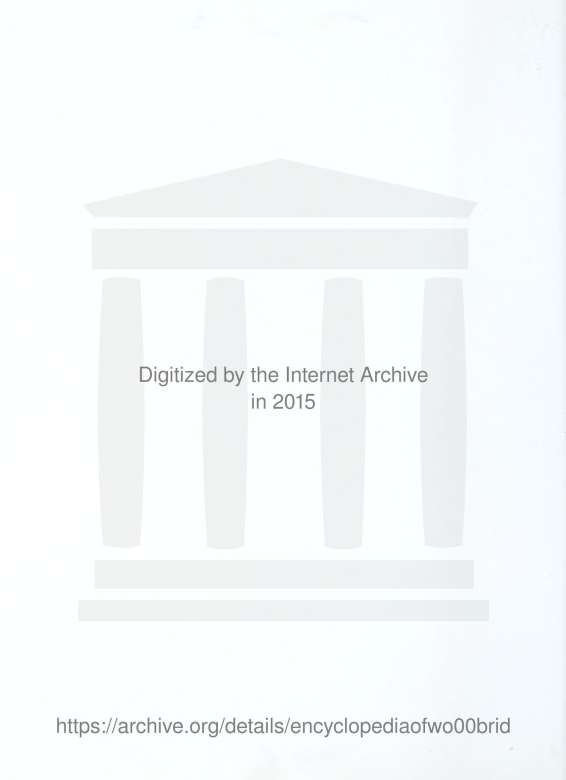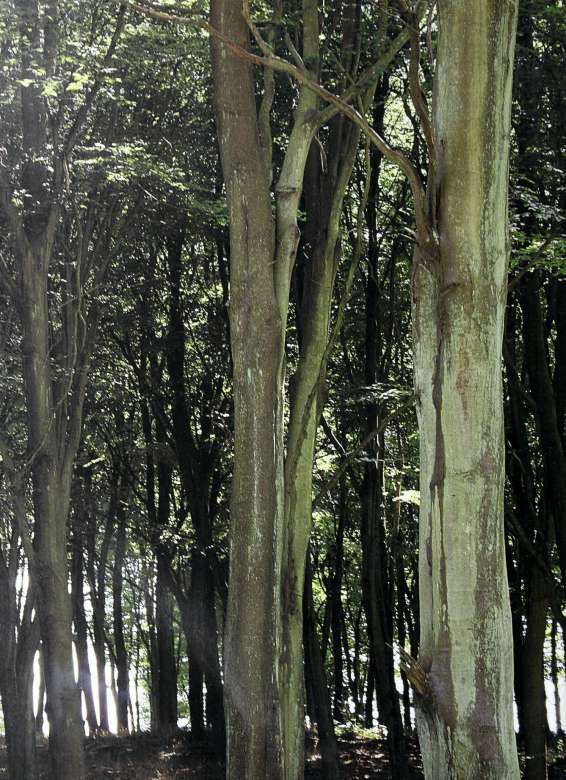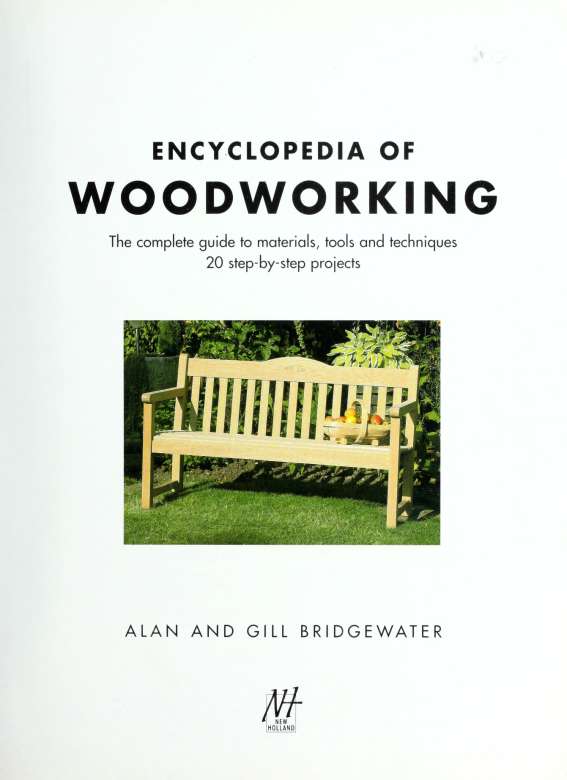This book made available by the Internet Archive.
INTRODUCTION
Wood is probably the most versatile of all materials; it is easily cut and shaped, incredibly strong and available in hundreds of colours, textures and grain patterns. Each piece of wood is unique ond its surface appears different each time it is cut. It is available as massive sections of tree trunk, sawn planks of various sizes, small, precious pieces for woodturning, and as thin sheets of decorative veneer. Everyone seems to like the warm, rich, "natural" texture of wood. Who can resist sliding their hands over the surface of a polished oak tabletop or stroking the worn-oway, burnished arm of a Windsor chair?
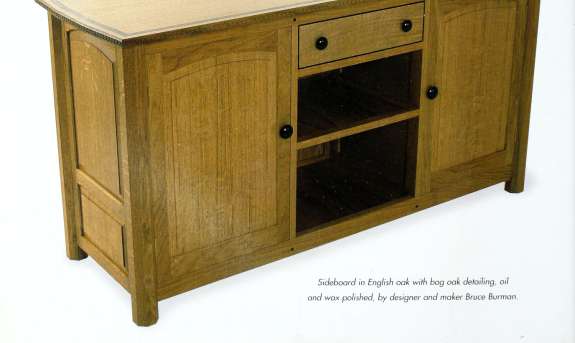
Working with wood can be very satisfying. Removing fine sfiavings with a smoothing plane, scooping out hollows with a gouge, steam-bending bow shapes, cutting perfect joints and achieving a fine finish are pleasures not to be missed.
Making your own furniture can save you money and the quality of your own woodwork will surpass anything that you can buy in a superstore. There is also the thought that your great-great-grandchildren will sit in your chair and admire your workmanship!

A bird carved from bog oak by Ronnie Graham.
Woodworking is not really a "kitchen-table" craft (generally you do need a whole room, shed or outdoor space in which to work), but it does not need to be physically demanding or expensive. Power tools are getting cheaper all the time and it is amazing what you can make with just a jigsaw and a router. Buy prepared timber if space is limited, or if you do not want to handle large pieces of timber or invest in large pieces of machinery. On the other hand, if you enjoy buying tools and machines, there is a tantalizing array of options.
This book explains the basic techniques required for successful woodworking, introduces specialized subjects such as turning, marquetry, steam-bending and carving, and presents twenty speciolly commissioned woodworking projects with step-by-step instructions. In addition, numerous somples of wood species and examples of other people's work provide further reference and inspiration.

A turned bowl made from contrasting woods by Kevin Neelley.

WOOD
\
WOOD
TREES
No two pieces of wood - even from tfie some tree - are exactly thie same. Thie best way to enjoy your woodworking journey is to fiave a clear understanding of wood's possibilities. If you know about colour, texture and working characteristics, you are three-quarters of the way there.
HARDWOODS AND SOFTWOODS
Hardwood comes from brood-leafed deciduous trees tfiat drop tfieir leaves anriuolly, and softwood comes from coniferous, cone-bearing evergreens tfiat retain their foliage (but tfiere are exceptions). Hardwood is generally fiarder in texture, fiorder to worl<, more dense in structure, fieavier, stronger and more durable tfion softwood (but again, there are exceptions). For example, cedar is a softwood (soft in texture, light in weight) but is more durable than many hardwoods; and lime (bosswood) is a hardwood but is soft in texture and easy to worl<. And, while a hardwood such as European oal< is durable, American red oak is not.
Softwood normally grows quickly; it is cheap, available as narrow planks (from small trunks) with many knots, and is used for paper-making, house-building and low-cost furniture. Hardwood tends to take a long time to grow; it is expensive, available in wide boards (from large trunks) with few knots, and is used for furniture-making.
Softwood furniture tends to be chunkier than hardwood furniture as bulkier sections are required in order to achieve the same structural strength. Softwood tends to expand and contract - "move", twist and warp - more readily than hardwood.

A newly planted forest of beech trees.

Softwood trees in a young forest.
Beech "coppice" woodland (the tree is cut at ground level to produce multiple shoots that grow into poles).
WOOD
GRAIN AND GROWTH
The grain, or patterns and textures, that we see in a length of planed wood is directly related to the growth of the tree. Many characteristics of grain are inherent to species - straight-grained lime, coarse- and wavy-grained European oak - but grain is also affected by growth. For example, slow and even growth results in a close grain, fast growth in a coarse grain, and irregular growth in cross-grain and badly aligned grain.
A slice through a tree will reveal loosely packed sapwood at the outer edges, and densely packed hearfwood at the centre, with good and bad growing years being shown by wide or narrow annual rings. Generally, the central heartwood of slow-grown timber, with its compacted rings and full colour, is considered to be the best wood.
WHICH PARTS OF A TREE ARE USED?
Traditionally, every lost bit of a tree was used, from the base through to the bark and branches. Nowadays, the most commercially usable boards come from the trunk or butt, meaning the straight length of tree that runs from the ground up to where the boughs and large limbs fork off. This part renders the most consistent sections, which are especially desirable for furniture-making.
Large limbs, boughs and crotches produce very useful and visually exciting sections for woodturning, carving, veneering, boat-building, house construction and so on. Some of the most beautiful and prized wood is obtained from the buttress, burrs, crotches and knots.

